
The Business of Fashion
Agenda-setting intelligence, analysis and advice for the global fashion community.

Agenda-setting intelligence, analysis and advice for the global fashion community.
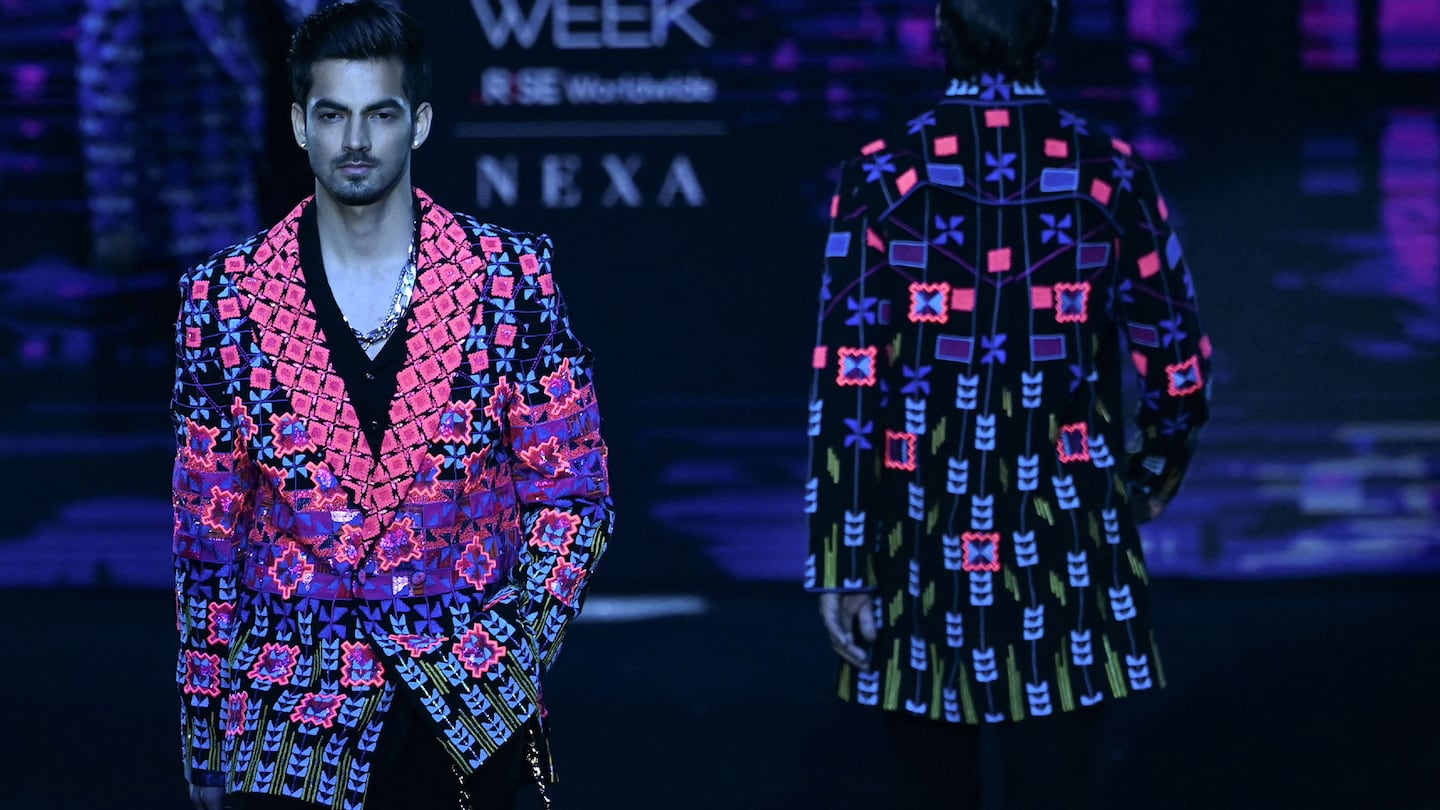
Manish Malhotra is one of a growing number of Indian designers hoping to turn his brand into a global business. Like Sabyasachi Mukherjee and Anita Dongre, he is a household name in his home country with a roster of celebrity clients. Now, with the backing of a prominent investor, he too is opening stores overseas.
Malhotra is set to join Dongre with a standalone outpost in Dubai, due to open by September 2023. Dongre opened her first flagship in the Dubai Mall this April and has been present in New York’s Soho since 2018. Sabyasachi chose the American fashion capital for his overseas debut with a boutique in the West Village last October. In February, Bengaluru-based artisanal handbag brand Aranyani chose London’s Mayfair for its first international outing.
Dongre was early out of the starting blocks because of an investment she secured ten years ago from General Atlantic, a US-based private equity firm that also has a stake in Tory Burch, Gymshark and Sézane.
More recently, Malhotra and Mukherjee were on opposite sides of a battle between the retail units of Indian conglomerates investing in more than a dozen local designer brands. Reliance Industries Limited partnered with the former as well as Rahul Mishra, Anamika Khanna, Ritu Kumar and others; Aditya Birla Fashion and Retail (ABFRL) signed with the latter, Tarun Tahiliani, Shantnu & Nikhil, House of Masaba and others.
ADVERTISEMENT
When many of those deals were announced, brands disclosed their ambitions to expand beyond their existing store footprint in Indian cities to the fashion capitals of Europe, North America and the Middle East.
But why is this wave of overseas expansion happening now? The capital injection that brands received certainly helps, but another factor is more elusive: the important role that India plays in the global fashion industry is finally gaining wider recognition. The timing of this shift could help open doors for designers faster than in the past even as they encounter challenges to becoming global luxury brands.
Dior presented its landmark Pre-Fall 2023 collection in Mumbai in March, featuring fine handwork from Indian artisans. The show was seen as a sign of the global luxury industry renewing its focus on the India market. Soon after, the opening of the Nita Mukesh Ambani Cultural Centre (NAMCC) and its ‘India in Fashion’ exhibit lured in Hollywood stars.
Meanwhile, Indian designers are increasingly worn by local and international celebrities at prominent international film festivals, red carpets and fashion weeks. At the same time, Indian stars are being tapped by global fashion brands as ambassadors.
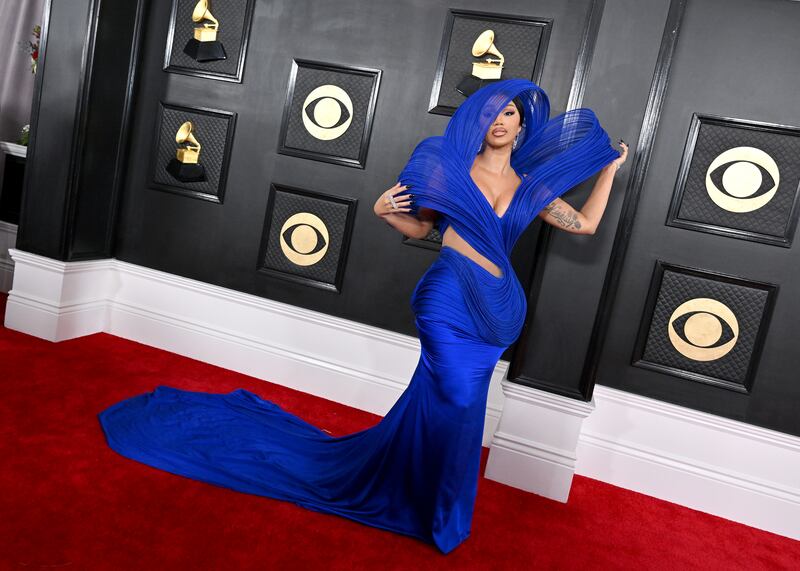
From Alia Bhatt’s appearance at Gucci’s cruise show in Seoul to Zendaya wearing Rahul Mishra at the NMACC launch and Gaurav Gupta showcasing at Paris Couture Week to Dhruv Kapoor presenting at Milan Fashion Week, there is growing proof that India’s international contributions to fashion are more relevant than ever. It only makes sense that India-based designers with global retail ambitions like Malhotra, Mukherjee and Dongre tap into this wider movement.
But that’s not to say that Indian fashion brands have been missing in the overseas retail mix before now. India-born, New York-based designers Bibhu Mohapatra and Naeem Khan have both established a strong presence in global fashion circles. Payal Singhal used to operate a store in the city in the early 2000s, JJ Valaya had a brief stint in Dubai between 2006 and 2009, and Manish Arora had a store in Paris for a few years before shuttering.
Meanwhile, ready-to-wear brand Varana continues to be available at its London outpost that opened in 2017. Jade by Monica & Karishma have been in Los Angeles through a by-appointment-only boutique since 2021. Lifestyle brand Nappa Dori and occasion wear label Frontier Raas both have stores in London and Dubai. Nalli Silk Sarees have stores in USA, Singapore, Canada, UAE and UK and jewellery brand Tanishq is in Dubai and the US.
India has been the backyard of fashion for too long, it’s time for it to lead from the front now.
But many of these were isolated local ventures or ad-hoc openings, unlike those happening now which are professed to be part of a broader global retail strategy. Designers in the latest wave suggest that cultural motivations, such as helping to shift the perception of India being just a manufacturing hub to a design hub, also play a part in their expansion plans.
ADVERTISEMENT
“The world has a terrible habit of pigeonholing designers to their geographies if they’re not from the western world. I want to challenge that narrative,” says Sabyasachi Mukherjee, whose business received 398 crore rupees ($48.3 million) when ABFRL acquired a 51 percent stake in it in 2021. The company reported revenues of 274 crore rupees ($33.2 million) in the 2020 financial year.
His New York store stocks a dedicated international range that is a mix of ready-to-wear and made-to-order, accessories and the brand’s biggest collection of fine jewellery outside of their Mumbai outpost.
“It also saddened me that given India’s incredible heritage and culture we have not produced a single global design or luxury brand. India has been the backyard of fashion for too long, it’s time for it to lead from the front now,” added the designer, who also opened a shop-in-shop at multi-brand retailer Bayt Damas in Dubai for his fine jewellery in 2021.
According to Haresh M Mirpuri, Aranyani’s founder and creative director, whose bags retail between $380-1800, “it has surprised many [overseas consumers] to see a luxury handbag brand of this level from India… [the customer mindset] starts with a feeling of ‘wow... is it possible?’ to ‘maybe I should try it.’ Our focus is to reduce the time lag between the two thought processes.”
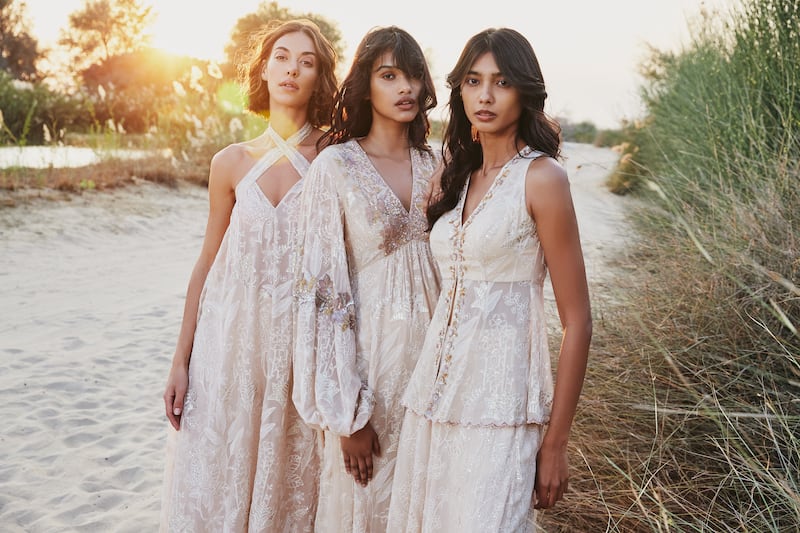
The change was a long time coming, suggests Srimoyi Bhattacharya, founder of Peepul Advisory, who has been advising luxury and lifestyle brands for over 25 years. “In the ‘90s in Paris, I remember watching this Japanese wave of design and wondering if the Indian aesthetic would make its mark in a similar wave and vein,” says Bhattacharya. “Indian designers are now “time to market” on all counts, and beyond the diaspora.”
India has the world’s largest diaspora population, at 18 million, and it cannot be ignored. North America, the United Kingdom, the Gulf states, Australia and other Asian countries host large numbers of Indian migrants and their foreign-born descendants. Indian designers can also tap into the wider South Asian diaspora market comprising Pakistanis, Sri Lankans, Nepalis and Bangladeshis.
But most recent designers’ expansion plans are focused on capturing the non-diaspora customer too. Having their designs on international celebrities is one way they are trying to seep into the mainstream imagination.
Anita Dongre, for instance, grabbed international attention when Britain’s Catherine, Princess of Wales, wore her tunic dress on a visit to India in 2016. More recently, Gaurav Gupta’s avant-garde couture has been seen on pop stars like Lizzo, Cardi B and Megan Thee Stallion. Jaipur label Harago’s embroidered shorts have been worn by Harry Styles while Misho’s jewels are a favourite of Kendall Jenner and Katy Perry.
ADVERTISEMENT
Mukherjee says that, aside from his saris and high jewellery, Sabyasachi bestsellers at his New York store are the more universal offerings like silk shirts, embroidered jackets and handbags.
“Our diaspora customer was already shopping with us remotely and on their visits to India. A few years ago, I knew that the brand was ready to reach out to the global customer. And my hunch was confirmed with my first collaboration with Bergdorf Goodman,” the designer says, referring to his capsule high jewellery collection first created for the New York department store back in 2020 which now has a permanent presence on the shop floor.
“[Sabyasachi] is clearly making an adjustment to have more westernised clothing in the New York boutique. But he has not completely forsaken the Indian market, because there are many Indians in America who still want to go there to get a sari,” said industry veteran Fern Mallis, the creator of New York Fashion Week, and former executive director of the Council of Fashion Designers of America.
“So, designers have to play both games. And find a happy balance so that one or the other customer is not intimidated nor feels they aren’t being addressed in these stores. I think Sabyasachi is doing good business here and paving the way for the India opportunity in America,” she added.
However, Mallis admits that it has taken some Indian designers longer to cross over than she expected. “[They] come here with a very focused, narrow collection [so] they need to make a wider offering,” she said.
Prior to the ongoing corporatisation of Indian fashion, even some of the biggest fashion houses in the country were run almost like mom-and-pop shops. Perhaps that’s why it has taken some designers more time than anticipated to operationalise their overseas business.
Among other things, they “need to figure out the pricing from India, including landed costs, duties, taxes and customs,” Mallis said.
To sustain a business in the US, she attests, designers must also address a variety of other issues that range from standardised sizing metrics (Indian brands are often known to tailor-make even ready-to-wear) to creating the right PR messaging in a market that is not always as familiar or uniform as it first appears.
Mallis identifies a diverse range of cities like Los Angeles, Dallas, Miami and Chicago as retail expansion targets for Indian brands beyond New York.
“They also need to physically make that commitment to spend more time here to understand the market,” she adds, citing the example of Anita Dongre, who, she feels, “worked around getting the right financing and business partners to expand and is doing a very respectable business here.”
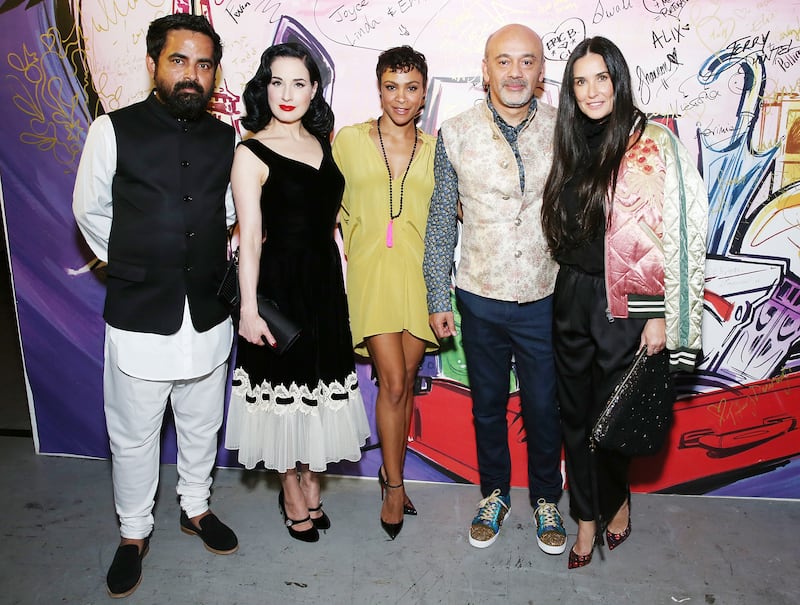
For Dongre, existing orders from the diaspora and online interest served as data to reinforce the viability of the business investment in both New York and Dubai. Both overseas stores are company-owned and -operated.
Yash Dongre, head of international operations and e-commerce at House of Anita Dongre, says the brand DNA has always been about rethinking the Indian aesthetic for a global audience.
“The garments are intentionally lightweight, fuss free and have pockets, suiting the preference of all ethnicities. Every piece is designed to be styled up or down to suit the occasion,” he said. However, the brand does localise for some occasions like the special line it introduced for Ramadan in Dubai.
Last financial year, the international business contributed 16 percent of Anita’s Dongre’s sales, and Yash Dongre expects it to go up to 20 percent this year. “Our US business does an annual revenue of [over] $2.5 million,” he added.
Dongre’s expansion plans continue to be focused on North America and the Middle East. Aranyani, on the other hand, plans to open one more store in London by next year before putting plans in place for other fashion capitals in Europe, the US and Asia.
The Middle East is home to a strong customer base for Manish Malhotra, currently accounting for 12 percent of his entire clientele. This includes members of the royal families of Saudi Arabia, Qatar and the UAE. “It’s one of the reasons why Dubai was our first option for expansion,” said Malhotra, whose company received a 40 percent stake investment for an undisclosed amount from Reliance Brands in 2021.
Dubai-based journalist and author Sujata Assomull says that some Middle Easterners love Bollywood as much as Indians do, so Malhotra’s “Bollywood connection means he is a household name in the region.” Close cultural exchanges and economic ties between markets in the Gulf like Dubai make the city a natural early staging post for Indian designers with global ambitions, she added.
It is Dubai’s affinity for unabashed luxury and glamour that was a particular draw for Malhotra, whose brand is synonymous with a glamorous aesthetic. But, perhaps tellingly, the designer is now creating a targeted collection of simpler silhouettes, universally appealing colours and accessories for the global audience he wishes to cater to in Dubai, that “still reflects myself and a part of India’s cultural legacy,” he said.
Assomull says that, unlike Malhotra, “most Indian designers use the pop-up route [in Dubai]. This is great in the short-term but does make a brand feel casual and not serious.” The case study from the subcontinent to follow, according to her, is of Pakistani designer Faraz Manan who opened a flagship store in the city in 2015. “He has become a part of the local fashion community, spends time there and... has adjusted his edit to appeal not only to South Asians and Arabs but the growing European expatriate community too.”
The UK — despite its long-standing ties with India and strong diaspora community — has not yet been a priority choice for expansion plans of many India-based designers.
Instead, British-born or Indian-origin UK-based designers like Ashish Gupta, Kaushik Velendra, Priya Ahluwalia and Supriya Lele, have garnered success there, suggests Caroline Rush, CEO of British Fashion Council. They not only appeal to customers beyond the South Asian diaspora, but also “raise the bar in terms of societal concern, perceptive design and bold creativity,” she said.
Eshita Kabra, founder and CEO of social fashion rental app By Rotation, feels there is potential in global markets for western silhouettes with South Asian prints, “such as the famous Rajasthani block print,” including those by “Made in India” labels like Saloni, De Castro Moda and Hemant & Nandita who are already doing well in the UK.
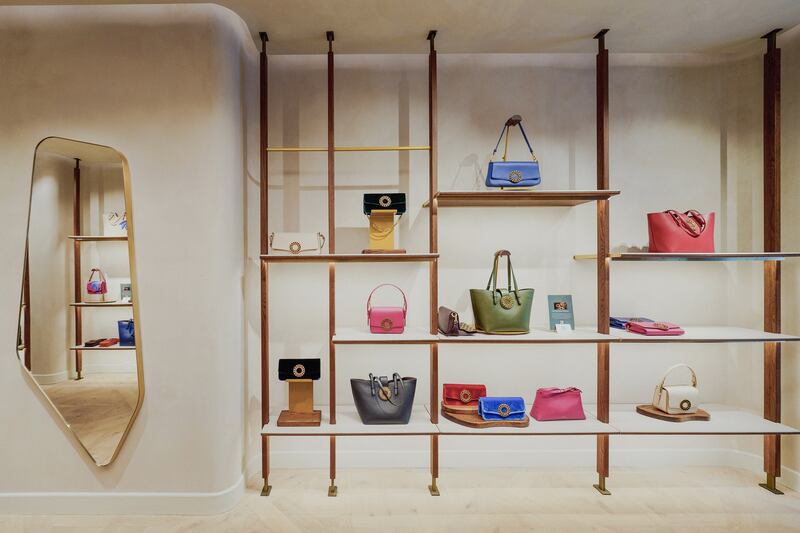
“Accessories and beauty have made some headway but market uncertainty, and Brexit combined with proximity to India [compared to the US] make London a trickier proposition,” said Bhattacharya.
Wherever Indian brands choose to take their aesthetic around the world, the approach needs to be ‘glocal’, so that both the creative and commercial sides of the company are working in tandem toward the same goals, and are conscious of every element of the business beyond just merchandise and store design.
“The representation of a brand culture, a name and a logo as potent as the actual product will contribute to the balancing act of a successful expansion,” said Bhattacharya.
It’s what Mukherjee is doing with his overall strategy, as well as his Bengal tiger logo ubiquitously placed on jewellery and accessories.
To persuade a wide range of international customers to value the switch from “Made in India” to also “Designed in India” calls for meticulous strategising and thinking beyond just easy wins for diaspora communities like traditional occasion wear and wedding outfits that are popular back in India.
If designers from India continue to diversify their product lines and adapt to local consumer psychology and behaviour — without undermining their brand equity or identity — then the world truly is their oyster.
For, at that stage, as Mallis puts it, the business mantra becomes as simple as “good design is good design, and talent is talent,” no matter where it comes from.
Industry leaders are divided on whether Galeries Lafayette’s expansion into India will spur other luxury department stores to enter the rapidly growing market.
Brands like Dior and Valentino are banking on India’s high growth potential, but it will take more than dazzling shows and sleek stores to turn this complex market into a major revenue source.
This week’s round-up of global markets fashion business news also features Latin American mall giants, Nigerian craft entrepreneurs and the mixed picture of China’s luxury market.
Resourceful leaders are turning to creative contingency plans in the face of a national energy crisis, crumbling infrastructure, economic stagnation and social unrest.
This week’s round-up of global markets fashion business news also features the China Duty Free Group, Uniqlo’s Japanese owner and a pan-African e-commerce platform in Côte d’Ivoire.
Affluent members of the Indian diaspora are underserved by fashion retailers, but dedicated e-commerce sites are not a silver bullet for Indian designers aiming to reach them.